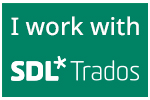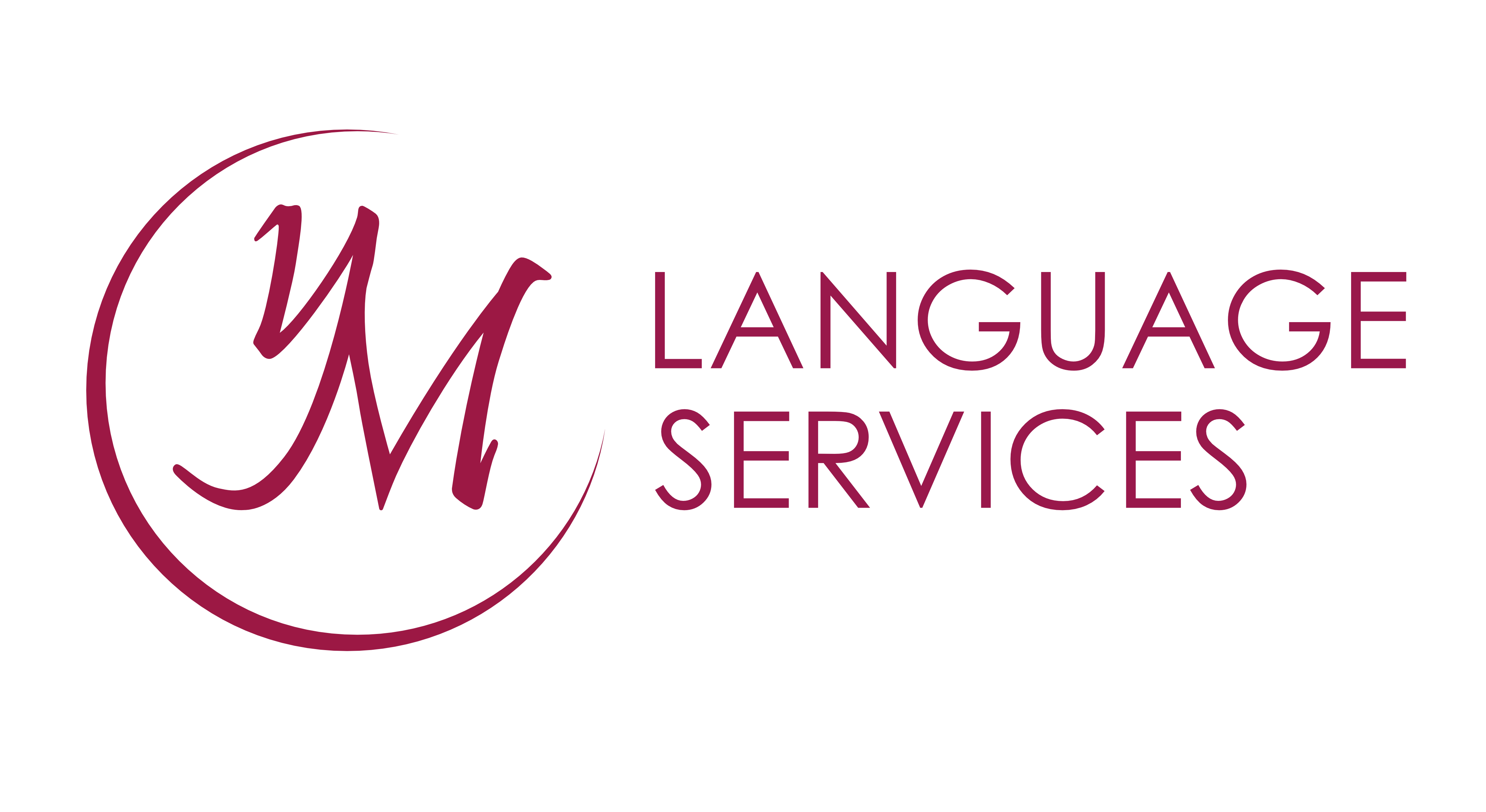TRANSLATION
Translating is more than transposing words from one language to another.
An accurate translation requires extensive knowledge of the industry, a perfect understanding of the source text, use of precise terminology and an appropriate style.
For this reason, our translations always include terminological preparation with the compilation of specific glossaries and a final revision by a specialised mother-tongue proof reader.
We translate your texts into English, French and Italian.
Here are some of the types of texts that we usually translate:

LEGAL TRANSLATIONS
Translation of legal texts including contracts, notary deeds, corporate, financial and accounting documents, proceedings, written declarations, certificates, and diplomas.
Sworn and certified translations.
Sworn and certified translations.

MEDICAL TRANSLATIONS
Translation of medical texts, including medical and scientific articles and clinical documentation.

TECHNICAL AND SPECIALISED TRANSLATIONS
Translation of specialised texts that require specific terminological preparation and are related but not limited to our areas of specialisation.

MARKETING TRANSLATIONS
Translation of various types of texts relating to the business and marketing sector, including commercial agreements, contracts, catalogues, handbooks and correspondence.

WEBSITE TRANSLATIONS
Translation, localisation and updating of websites.
SEO optimised translation and adaptation of the website content to the target market.
SEO optimised translation and adaptation of the website content to the target market.

FAQ
What is the difference between a translator and an interpreter?
The translator and the interpreter are different figures which should not be confused as they deal with two activities which look similar but which are very different.
However, very often, the same professionals work both as translators and interpreters because, thanks to their academic education and their experience, they have acquired and improved both translation and the interpreting techniques.
Translators work with written texts: they translate, in writing, a text from a source language to a target language. Translators have to make accurate terminology searches and they work in strict collaboration with a proof reader who is in charge of proofreading the text translated by the translator (see ‘How is a text translated?’).
On the other hand, interpreters, thanks to different memory strategies and note-taking techniques, orally convey the meaning of speech from one language into another. Their performance is instantaneous and ready to be listened to because during the days before the event or the meeting they prepare accurately, studying the topic that will be interpreted, and compiling specific terminology glossaries in different languages. For more information on the different interpretation techniques, please visit the page dedicated to interpreting services.
However, very often, the same professionals work both as translators and interpreters because, thanks to their academic education and their experience, they have acquired and improved both translation and the interpreting techniques.
Translators work with written texts: they translate, in writing, a text from a source language to a target language. Translators have to make accurate terminology searches and they work in strict collaboration with a proof reader who is in charge of proofreading the text translated by the translator (see ‘How is a text translated?’).
On the other hand, interpreters, thanks to different memory strategies and note-taking techniques, orally convey the meaning of speech from one language into another. Their performance is instantaneous and ready to be listened to because during the days before the event or the meeting they prepare accurately, studying the topic that will be interpreted, and compiling specific terminology glossaries in different languages. For more information on the different interpretation techniques, please visit the page dedicated to interpreting services.
How is a text translated?
For the translation of a text, the work of two professional translators is required. The translator, after having read the text to be translated in order to understand its meaning and its content, makes
accurate terminology searches and compiles glossaries with the technical terminology, using parallel texts on the same topic both in the source and in the target language.
Only after this first step, using the especially created glossary and the previously created translation memories, do they start the translation of the text producing the first draft. They then read the translated text to verify its grammatical correctness, terminology consistency, analogy between parts of the text containing similar terminology and sentence structures in addition to an appropriate, consistent style.
In addition to specialised dictionaries and glossaries, professional translators use specific CAT tools using translation memories with the aim of guaranteeing terminological consistency among different texts on the same topic.
At a later stage, the proof reader will review the translated text. They will carefully verify terminological consistency, spelling, linguistic and grammatical correctness as well as the style of the text, also discussing some aspects with the first translator.
They will then proceed to a a final check of the text, checking the layout of the translated text and comparing it to the source text. In fact, for files that cannot be edited directly, a file with the same layout will be created so that the end result will be identical to the original file in terms of layout and graphical appearance
When it comes to sworn translations, the translator has to go to a court to complete the procedure to legalise the translation they have made. Thanks to this procedure, the translated document is recorded in a specific register and tax stamps are affixed while the translator signs a specific document certifying the accuracy of the translation (see ‘How does the procedure for sworn translations work?’).
Only after this first step, using the especially created glossary and the previously created translation memories, do they start the translation of the text producing the first draft. They then read the translated text to verify its grammatical correctness, terminology consistency, analogy between parts of the text containing similar terminology and sentence structures in addition to an appropriate, consistent style.
In addition to specialised dictionaries and glossaries, professional translators use specific CAT tools using translation memories with the aim of guaranteeing terminological consistency among different texts on the same topic.
At a later stage, the proof reader will review the translated text. They will carefully verify terminological consistency, spelling, linguistic and grammatical correctness as well as the style of the text, also discussing some aspects with the first translator.
They will then proceed to a a final check of the text, checking the layout of the translated text and comparing it to the source text. In fact, for files that cannot be edited directly, a file with the same layout will be created so that the end result will be identical to the original file in terms of layout and graphical appearance
When it comes to sworn translations, the translator has to go to a court to complete the procedure to legalise the translation they have made. Thanks to this procedure, the translated document is recorded in a specific register and tax stamps are affixed while the translator signs a specific document certifying the accuracy of the translation (see ‘How does the procedure for sworn translations work?’).
How should I proceed for the translation of my document?
We kindly ask you to fill in the form and to send us the text to be translated so that we can provide you with a detailed, personalised, free and non-binding quote, taking into account applicable discounts.
We would like to remind you, whenever possible, to send us a text in an editable format (see 'Which text formats do you translate?'). Once you have accepted the quote and received our confirmation, your text will be translated and sent to you, as agreed, by e-mail or by registered mail within the agreed deadline together with the invoice for the payment. We kindly remind you that in some cases, e.g. sworn translations, an advance payment is required to cover expenses that we will have to incur in advance.
We would like to remind you, whenever possible, to send us a text in an editable format (see 'Which text formats do you translate?'). Once you have accepted the quote and received our confirmation, your text will be translated and sent to you, as agreed, by e-mail or by registered mail within the agreed deadline together with the invoice for the payment. We kindly remind you that in some cases, e.g. sworn translations, an advance payment is required to cover expenses that we will have to incur in advance.
Which text formats do you translate?
We translate all text formats. However, whenever possible, we kindly ask you to send us the text to be translated in an editable format (such as .doc, .rtf, .xls, .txt, convertible PDF files), so that we can easily work on your document: when the translator works on an editable file, they only have to translate the text without having to rewrite data, graphs and tables which, in some cases, do not need to be translated and, in addition to that, they do not have deal with the graphic layout and format of the translated text.
In this case the translation process will be sped up and the translated document will have exactly the same layout as the original document.
If your documents are uneditable (e.g. in the case of paper files, scanned documents, non-convertible PDF files), in addition to the translation, the translator will have to pay attention to the layout and the format of the translated text comparing it to the original file - this will require additional time and work and, therefore, extra charges can apply.
How is the price of a translation calculated?
The price of a translation depends on different factors: text length (number of words or standard page of 1,500 characters including spaces), repetitions or sections of the text that are identical or similar, text complexity (for the translation of some topics a specialisation and the creation of specific glossaries is required and the work of additional translators may be necessary), text format (when uneditable files are submitted, it is necessary to change the graphic layout and the format of the translated text - see ‘Which text formats do you translate?’), and urgency (when a translation is needed within a urgent deadline, we have to reorganise the work to give priority to your request; additional charges may therefore apply).
For all editable texts, the price will be calculated per word (considering the words of the source text), while for non-editable texts, as we cannot calculate how many words are contained in the document, we will apply a price per page. Moreover, we can offer discounts on the translation of long documents and of texts that are similar to other texts previously translated for the same client because, in this case, having already dealt with texts on the same topic and having already compiled terminology glossaries, the translator is familiar with the specific terminology and the style of the source text.
For all editable texts, the price will be calculated per word (considering the words of the source text), while for non-editable texts, as we cannot calculate how many words are contained in the document, we will apply a price per page. Moreover, we can offer discounts on the translation of long documents and of texts that are similar to other texts previously translated for the same client because, in this case, having already dealt with texts on the same topic and having already compiled terminology glossaries, the translator is familiar with the specific terminology and the style of the source text.
How long does it take to translate a document?
The time required to deliver a translation depends on several factors, including, first of all, the length of the source text (knowing that a professional translator can approximately translate up to 2,500 words per day) and the level of technicality of the text.
Another aspect that should not be overlooked is the format of the source text as all uneditable text formats (e.g. scanned documents, non-convertible PDFs...) require more work on the layout of the translated text and sometimes it is also necessary to copy data that should not be "translated", but must be included in the target text (e.g. in the case of tables, graphs...). For more details on this aspect, see 'What formats of text do you translate?'.
After having examined the text to be translated, in our quote we will precisely indicate the deadlines which we will rigorously meet ensuring that the translated, proofread and verified text is delivered by the agreed date.
How does the procedure for certified translations work?
In the case of certified translations, the translated text is accompanied by a certificate of accuracy, indicating the translator's details and confirming that the translation has been carried out to the best of the translator's ability and knowledge by faithfully translating the information contained in the source text.
This procedure does not involve the affixing of revenue stamps and the client will be able to directly print all the documents as original documents are not required to be sent. In the case of certified translations, the agreed amount must be paid in advance.
This procedure does not involve the affixing of revenue stamps and the client will be able to directly print all the documents as original documents are not required to be sent. In the case of certified translations, the agreed amount must be paid in advance.
How does the procedure for sworn translations work?
In the case of sworn translations, the translator must go to a court to complete the procedure to legalise the translation they have made. Thanks to this procedure, the translated document is recorded in a specific register and tax stamps are affixed while the translator signs an official statement certifying the accuracy of the translation.
For this type of translation, the amount for the sworn procedure, the cost for photocopies of all the documents and for the revenue stamps required by law will be added to the amount indicated for the translation of the documents.
If the folder containing the translated and sworn documents (official statement, original texts and translated texts) cannot be delivered by hand to the client or to a trusted person, we can send the documents by registered mail.
In the case of sworn translations, the agreed amount must be paid in advance.
In compliance with the code of ethics and deontology that regulates our sector, we ensure complete discretion and confidentiality with regard to the information contained in the documents that are delivered to us or which we will learn about in the performance of the task entrusted to us. We also guarantee total price transparency thanks to the possibility of receiving an immediate and personalised offer according to your needs.

To get a quote for a translation service, please fill in the form providing the requested information.

To get a quote for a translation service, please fill in the form providing the requested information.



